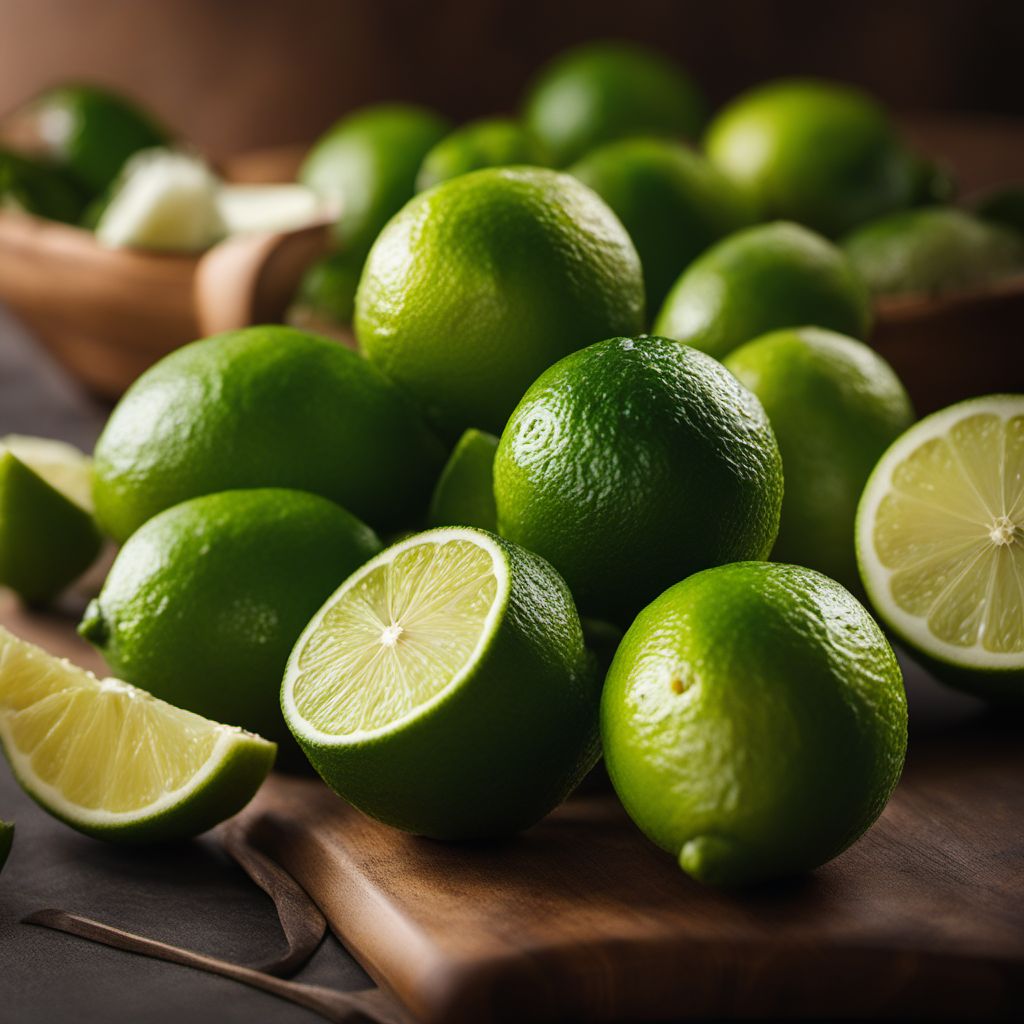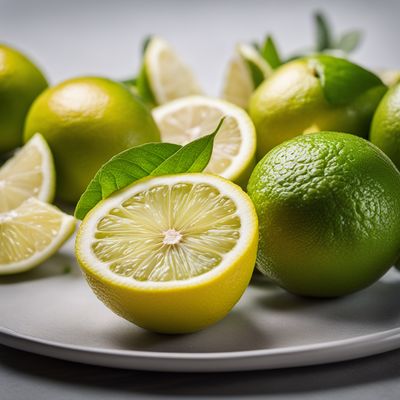
Ingredient
Limes and similar-
The Zesty Citrus Delight
Limes are small, round citrus fruits with a bright green color and a thin, smooth skin. They have a tart, acidic taste with a hint of sweetness, and their juice is highly aromatic. Limes are known for their high vitamin C content and are often used to add a tangy, refreshing flavor to beverages, desserts, marinades, dressings, and savory dishes. Other similar citrus fruits include lemons, which have a similar tartness but a more pronounced sourness, and key limes, which are smaller and have a stronger, more floral flavor.
Origins and history
Limes are believed to have originated in Southeast Asia, specifically in the region encompassing India, Myanmar, and Malaysia. They were introduced to Europe by Arab traders during the Middle Ages and later spread to the Americas through Spanish and Portuguese explorers. Today, limes are cultivated in tropical and subtropical regions worldwide, with Mexico, India, and Brazil being the leading producers.
Nutritional information
Limes are a good source of vitamin C and antioxidants, which help boost the immune system and protect against cell damage. They also contain small amounts of other vitamins and minerals, including potassium and folate. However, limes are low in calories and carbohydrates.
Allergens
Citrus fruits, including limes, can cause allergic reactions in some individuals. People with citrus allergies should avoid consuming limes or any products containing them.
How to select
Choose limes that are firm and heavy for their size, with smooth, glossy skin. Avoid limes that have soft spots, blemishes, or wrinkled skin, as these are signs of age or spoilage. The skin should be vibrant green and free from any discoloration. Additionally, limes should yield slightly to gentle pressure when squeezed, indicating juiciness.
Storage recommendations
Limes can be stored at room temperature for a short period, but for longer storage, refrigeration is recommended. Place limes in a plastic bag or wrap them in a damp paper towel to prevent them from drying out. Stored properly, limes can last for up to 2 weeks. To extend their shelf life, you can also freeze lime juice or zest in ice cube trays for future use.
How to produce
Limes can be grown in containers or in the ground, provided they have well-draining soil and receive adequate sunlight. They are typically propagated from seeds or cuttings, but it is more common to purchase young lime trees from nurseries or garden centers. Lime trees require regular watering, fertilization, and protection from frost or extreme temperatures.
Preparation tips
Limes are incredibly versatile and can be used in both sweet and savory dishes. They are commonly used to make limeade, margaritas, and other citrus-based beverages. In cooking, limes are used to add acidity and brightness to dishes such as ceviche, guacamole, salsas, and marinades. They are also a key ingredient in many desserts, including key lime pie and lime-flavored sorbets or ice creams.
Substitutions
Lemons can be used as a substitute for limes in most recipes, although the flavor profile will be slightly different. Other suitable substitutes include vinegar or other citrus fruits such as grapefruit or oranges, depending on the desired flavor outcome.
Culinary uses
Limes are widely used in various cuisines, including Mexican, Thai, Indian, and Vietnamese. They are a staple in Mexican cuisine, where they are used to make salsa, ceviche, and traditional beverages like margaritas. In Southeast Asian cuisines, limes are often used in curries, stir-fries, and noodle dishes. They are also a popular ingredient in desserts, salad dressings, and marinades around the world.
Availability
Limes are cultivated in tropical and subtropical regions worldwide, including Mexico, India, Brazil, Thailand, and the United States (Florida and California).



